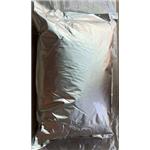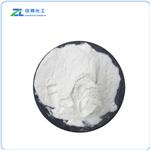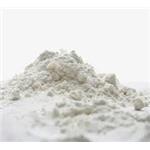Chemical Properties
Tetracaine hydrochloride is a white, crystalline powder, odourless; hygroscopic; it has a slightly bitter taste and causes local numbness after being placed on the tongue. Soluble in water, soluble in ethanol (~750 g/l), practically insoluble in ether. even in the absence of light, it is gradually degraded on exposure to a humid atmosphere, the decomposition being faster at higher temperatures.
Originator
Anestesia topica,Miro
Uses
Tetracaine hydrochloride is a local anesthetic used topically in opthalmology.It is a highly effective local anesthetic that reversibly blocks nerve function. It is clinically used for infiltration anesthesia, nerve block anesthesia, epidural anesthesia, etc. Compared with procaine, its local anesthesia effect is remarkable. Tetracaine hydrochloride has been widely used in clinical practice.
Application
Tetracaine hydrochloride is also known as ropivacaine hydrochloride, pantocaine, pantocaine and four ropivacaine hydrochloride. It is easily soluble in water and ethanol, but insoluble in ether, benzene. Tetracaine hydrochloride is a local anesthetic with long-acting ester. In addition, procaine is widely used in clinical, but because of its poor permeability and poor narcotic performance, a small tetracaine was found in 1930 found.
Tetracaine hydrochloride can be used for topical anesthesia, and 0.05%-0.1% tetracaine hydrochloride can provide long-term and good effect of surface anesthesia. Meanwhile, tetracaine hydrochloride is still widely used in ophthalmic surface anesthesia, which has a long time for surface anesthesia and sensory resistance.
Preparation
Synthesis of tetracaine hydrochloride using 4-Methyl-2-pentanone as starting material: To the reaction kettle, first add 320.0kg of methyl isobutyl ketone, then add 40.0kg (207mol) of 4-Butylaminobenzoic acid and 56.8kg of anhydrous potassium carbonate in turn, heat the oil bath to 116°C for reflux reaction for 4h, stop heating, and react for a while. Cool for 0.5h, then add 38.3kg (266mol) of 2-Dimethylaminoethyl Chloride Hydrochloride, continue to heat to 116°C for reflux reaction for 4h, and cool to below 30°C after the reaction is complete, then add deionized water 127.0 kg stirred for 30min, left standing for 1h, separated the organic layer, dried and concentrated to obtain an oily substance, then added 169.0kg of acetone and stirred, adjusted the pH value with concentrated hydrochloric acid to 3-4, and precipitated a large number of crystals, which continued to crystallize for 12h after freezing. , centrifugal filtration and drying to obtain 53.0kg of white solid which is tetracaine hydrochloride, the yield is 85.07%, and the HPLC purity is 99.34%.
Definition
ChEBI: Tetracaine hydrochloride is a benzoate ester. It is a potent local anesthetic of the ester type used for surface and spinal anesthesia.
Therapeutic Function
Local anesthetic
General Description
Tetracaine hydrochloride is a local anesthetic drug and an ester derivative of
p-amino benzoic acid. It acts by interfering with the entry of sodium ions into nerve cells and is one of the commonly used topical anesthetics.
Biological Activity
tetracaine hcl is a potent local anaesthetic and a channel function allosteric inhibitor.tetracaine hydrochloride is a calcium channel protein inhibitor and blocks voltage-sensitive release of ca2+ from sarcoplasmic reticulum. tetracaine is a potent local
Biochem/physiol Actions
Blocks voltage-sensitive release of Ca2+ from sarcoplasmic reticulum.
Contact allergens
Amethocaine is a local anesthetic used in dental surgery.
It was reported as an agent of contact dermatitis
in dentists or dental nurses and in ophthalmologists
Side effects
Tetracaine hydrochloride is in the ester-type local anesthetic family of medications. It works by blocking the sending of nerve impulses. common side effects include Transient stinging, burning, and conjunctival redness, eye irritation, eye pain, ocular discomfort. Allergic reactions may uncommonly occur. Long term use is generally not recommended as it may slow healing of the eye. It is unclear if use during pregnancy is safe for the baby.
Health effects
Tetracaine hydrochloride (TTC) is a long-lasting local anesthetic commonly used for topical anesthesia, which is water-soluble, has strong penetrability and a good anesthetic effect. However, TTC has a higher cytotoxicity compared with other local anesthetics due to its high permeability. Previous studies have reported that TTC exerts a cytotoxic effect on certain cell types, such as human corneal stromal cells and human corneal epithelial cells, inducing apoptosis and necrosis. Research jave found that large doses of intrathecal TTC increase the concentration of glutamate in cerebrospinal fluid, thereby causing neuronal injury in rabbits. In addition, AMPA receptor activation was revealed to be involved in TTC-induced neurotoxicity in the spinal cord. TTC-induced apoptosis may be triggered through Fas death receptors and mediated by Bcl-2 family proteins, in a mitochondria-dependent pathway. TTC-induced human corneal epithelial (HCEP) cell apoptosis via a death receptor-mediated mitochondrion-dependent pathway. Low concentrations of TTC induced the apoptosis of human T-lymphoma cells, whereas a higher concentration of TTC induced necrosis[1].
Clinical claims and research
Topical administration of Tetracaine Hydrochloride Ophthalmic Solution, USP 0.5% results in localized temporary anesthesia. The maximum effect is achieved within 10–20 seconds after instillation, with efficacy lasting 10–20 minutes. Duration of effect can be extended with repeated dosing.
Toxics Screening Level
The initial threshold screening level (ITSL) for tetracaine hyrochloride is 0.3 μg/m3 based on an annual averaging time.
References
[1] Ran Zhang. “Tetracaine hydrochloride induces macrophage pyroptosis through caspase?1/11?GSDMD signaling pathways.” Experimental and therapeutic medicine 26 3 (2023): 428.





